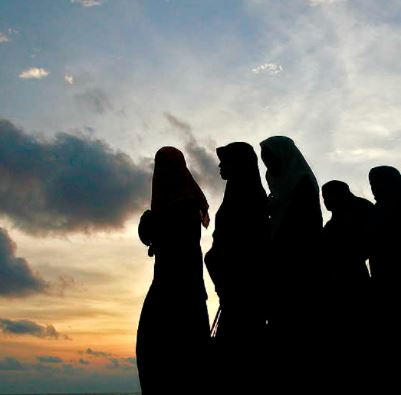The Interpretative Answer to the Hijab Row

This topic of “The Interpretative Answer to the Hijab Row” is important from the perspective of the UPSC IAS Examination, which falls under General Studies Portion.
What the editorial is about?
Freedom of Religion and Attire
Context:
The issue of wearing a hijab to the colleges along with the uniform in Karnataka over religious practices throws the spotlight on freedom of religion.
What is meant by Hijab?
A hijab is a veil worn by certain Muslim women in the presence of any male outside of their immediate family or sometimes by men, which covers the head and chest.
Constitutional Provisions
Preamble
- The Preamble of the Constitution states India as a secular country.
Right to freedom of religion
Article 25 to 28 of Part-3 (Fundamental Rights)
Article 25(1)
- It guarantees
- The freedom of conscience
- The right freely to profess, practise and propagate religion.
- Negative liberty
- The state shall ensure that there is no interference or obstacle to exercising this freedom.
- However, the state can restrict the right for grounds of public order, decency, morality, health and other state interests.
Article 26
- It deals with
- The freedom to manage religious affairs subject to public order, morality and health.
Article 27
- It states that no person shall be compelled to pay any taxes for the promotion or maintenance of any particular religion.
Article 28
- It deals with
- The freedom as to attendance at religious instruction or religious worship in certain educational institutions.
The view of the judiciary
Shirur Mutt Case
- The honourable Supreme Court in 1954 held in the Shirur Mutt case that
- The term “religion” will cover all rituals and practices integral to religion.
- What constitutes the essential part of a religion is to be determined regarding the doctrines of that religion itself.
The “essential religious practices” test
- The test to determine what is integral.
- One of the first attempts of this test was made in Madras vs Sri Lakshmindra Thirtha Swamiar of Sri Shirur Mutt case (1954).
S R Bommai vs Union of India (1994)
- The Supreme Court said that the state should free itself from religious affinity.
Fathima Tasneem v State of Kerala (2018)
- A single bench of the Kerala HC held that the collective rights of an institution would be given primacy over the individual rights of the petitioner.
Interpretation of ‘the essential religious practices test’ by the court in the past
- The Supreme Court in a 2004 ruling held that the Ananda Marga sect had no fundamental right to perform the Tandava dance in public streets since it did not constitute an essential religious practice of the sect.
- The Supreme Court in 2016 upheld the discharge of a Muslim airman from the Indian Air Force for keeping a beard, distinguishing the case from that of Sikhs who are allowed to keep a beard. The court held that keeping a beard was not an essential part of Islamic practices.
- In Bijoe Emmanuel vs State of Kerala (1986), students belonging to the denomination of Jehovah’s Witnesses were allowed to abstain from singing the national anthem that they claimed to contradict their religious faith.
- The Supreme Court of Canada in the Multani case (2006) upheld the right of a Sikh student to wear a Kirpan while attending the class, without harming others.
Way Ahead
- Pluralism and inclusiveness are characterised by religious freedom. Its purpose is to promote social harmony and diversity.
- There is no one uniform code today which is mandated throughout the State.
- It would be a depressing response from a government that prioritises uniformity over diversity.
- Religious fanaticism, whether by the majority or the minority, has only damaged the secular mosaic.
- Considering the questions popping up in the minds of the people such as ‘Would the same standards that banish a female hijab apply to a turban worn by a male Sikh student?’, A head veil is probably acceptable, but a face veil may not. It is always good to strike a balance, whenever possible.
Referred Sources

